Introduction
Parmesan Garlic Butter Rice is a delectable side dish that elevates any meal with its rich flavors and creamy texture. This dish is not only an exciting accompaniment to your favorite proteins but also serves as a standalone delight that can charm even the pickiest of eaters. The harmonious blend of garlic, butter, and Parmesan cheese creates a savory experience that enhances the simple grain of rice, making it a memorable addition to your culinary repertoire.
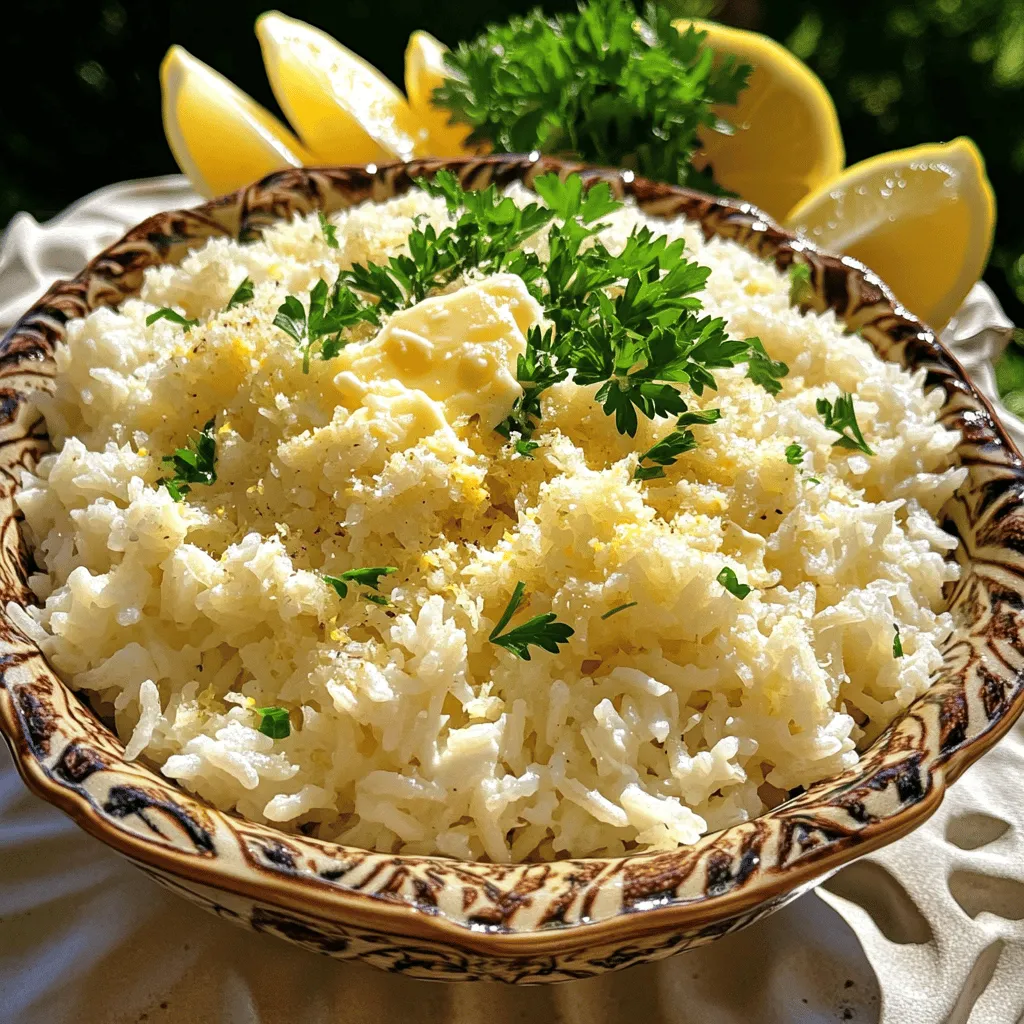
Rice is a staple ingredient found in countless cuisines around the world, celebrated for its versatility and ability to absorb flavors. From the fragrant Jasmine rice of Southeast Asia to the aromatic Basmati rice of the Indian subcontinent, this grain serves as a canvas for various culinary masterpieces. In the case of Parmesan Garlic Butter Rice, we focus on the marriage of classic Italian flavors with the comforting simplicity of rice, resulting in a dish that is both familiar and exotic.
The appeal of combining garlic, butter, and cheese in cooking is undeniable. Garlic brings a pungent sweetness that enhances the overall flavor profile, while butter adds richness and a luxurious mouthfeel. When you introduce Parmesan cheese into the mix, you create a savory depth that is hard to resist. This combination not only tantalizes the taste buds but also elevates the dish to a gourmet level, making it suitable for both casual dinners and special occasions.
In this article, we aim to provide a detailed recipe and cooking instructions for Parmesan Garlic Butter Rice, ensuring that you can recreate this exquisite dish with ease. Whether you are preparing a family meal or entertaining guests, this dish will surely impress. Let’s dive into the ingredients that make this recipe shine.
Understanding the Ingredients
Long-Grain Rice
At the heart of Parmesan Garlic Butter Rice is the rice itself. Choosing the right type of rice is crucial for achieving the desired texture and flavor. Long-grain rice varieties such as Jasmine and Basmati are excellent choices for this recipe. Jasmine rice, with its slightly sticky texture and nutty aroma, pairs beautifully with the buttery and cheesy elements. On the other hand, Basmati rice, known for its fluffy grains and distinct fragrance, offers a light and airy quality that complements the rich flavors of garlic and Parmesan.
Both types are widely available and can transform your dish, but it’s essential to note that their cooking times and water absorption rates may vary. Whichever you choose, opting for high-quality long-grain rice is key to a successful outcome.
Unsalted Butter
Butter is a cornerstone of flavor in this recipe, and using unsalted butter allows for better control over the seasoning. Salted butter can vary in salt content, which could unbalance the flavors of the dish. By choosing unsalted butter, you can add salt according to your taste preference, ensuring that every bite of the Parmesan Garlic Butter Rice is perfectly seasoned. The creamy richness of the butter enriches the dish, imparting a smooth mouthfeel that enhances the overall dining experience.
Garlic
Garlic is not merely an ingredient; it is the soul of this dish. Renowned for its robust flavor and numerous health benefits, garlic adds depth and aroma to the rice. It is packed with antioxidants and has anti-inflammatory properties, making it a nutritious addition to your meals. In this recipe, we will be sautéing fresh garlic, which brings out its natural sweetness and mellow flavor. However, care must be taken to avoid burning the garlic, as it can quickly become bitter if overcooked.
Vegetable vs. Chicken Broth
The choice between vegetable and chicken broth can significantly influence the flavor of your Parmesan Garlic Butter Rice. Vegetable broth offers a lighter, plant-based flavor profile, making it suitable for vegetarian or vegan diets. On the other hand, chicken broth adds a richer, more savory depth that enhances the overall taste of the dish. When selecting your broth, consider your dietary preferences and the desired flavor intensity. Homemade broth is always a great option if you have the time, as it can elevate your dish even further.
Parmesan Cheese
No dish titled “Parmesan Garlic Butter Rice” would be complete without the star ingredient: Parmesan cheese. This hard, aged cheese is celebrated for its sharp, nutty flavor and granular texture. There are several types of Parmesan cheese available, such as Parmigiano-Reggiano, which is a high-quality option with a complex flavor profile. Grated or shredded Parmesan is ideal for this recipe, as it melts beautifully into the rice, creating a creamy consistency.
When purchasing Parmesan, opt for block cheese and grate it yourself for the freshest flavor. Pre-grated cheese may contain anti-caking agents that can affect the melting quality. Freshly grated Parmesan will provide a richer taste and a smoother texture in your final dish.
Fresh Parsley
Fresh herbs can elevate any recipe, and parsley is a versatile herb that adds a pop of color and a refreshing finish to Parmesan Garlic Butter Rice. Its bright, slightly peppery flavor complements the richness of the butter and cheese, balancing the dish beautifully. Chopped fresh parsley not only enhances the visual appeal, but it also provides a nutritional boost, adding vitamins and antioxidants to your meal.
Lemon Zest
While lemon zest is an optional ingredient, its addition can bring a delightful brightness to the dish. The zest of a lemon contains essential oils that impart a fresh, citrusy aroma and flavor without the acidity of lemon juice. A hint of lemon zest can enhance the overall flavor profile, making the dish feel lighter and more vibrant. If you prefer a more pronounced citrus flavor, consider squeezing a bit of lemon juice over the rice just before serving.
Preparation Steps
Before jumping into the cooking process, it is essential to prepare your ingredients and understand the importance of rinsing the rice. Rinsing helps remove excess starch, which can cause the rice to become gummy during cooking. To rinse the rice, place it in a fine-mesh strainer and run it under cold water until the water runs clear. This simple step will improve the texture of your final dish, resulting in fluffy, separated grains.
Sautéing Garlic
Sautéing garlic is a critical step that can significantly influence the flavor of your Parmesan Garlic Butter Rice. To achieve the perfect aroma without burning the garlic, follow these tips:
1. Use Low to Medium Heat: Garlic can burn quickly, so it’s essential to sauté it over low to medium heat. This allows the garlic to release its flavors gradually without turning bitter.
2. Add it at the Right Time: When cooking your rice, you will typically start by melting the butter in a saucepan. Once the butter is melted and bubbly, add the minced garlic and sauté it for about 30 seconds to 1 minute, or until fragrant. Keep a close eye on it during this time, as it can go from perfectly golden to burnt in seconds.
3. Stir Constantly: Stir the garlic frequently to ensure even cooking. This constant movement helps prevent certain pieces from browning too quickly while others remain raw.
4. Know When to Remove: The garlic is ready when it turns a pale golden color and releases a sweet, aromatic scent. If you notice any signs of browning, remove it from the heat immediately to avoid bitterness.
By following these steps, you’ll create a flavorful base for your Parmesan Garlic Butter Rice, setting the stage for the addition of the rice and other ingredients.
With a solid understanding of the ingredients and preparation steps, you’re well on your way to making a delicious batch of Parmesan Garlic Butter Rice. In the next section, we will delve into the detailed cooking instructions, ensuring that you can create this flavorful side dish with confidence and ease. Stay tuned as we guide you through each step to perfection.
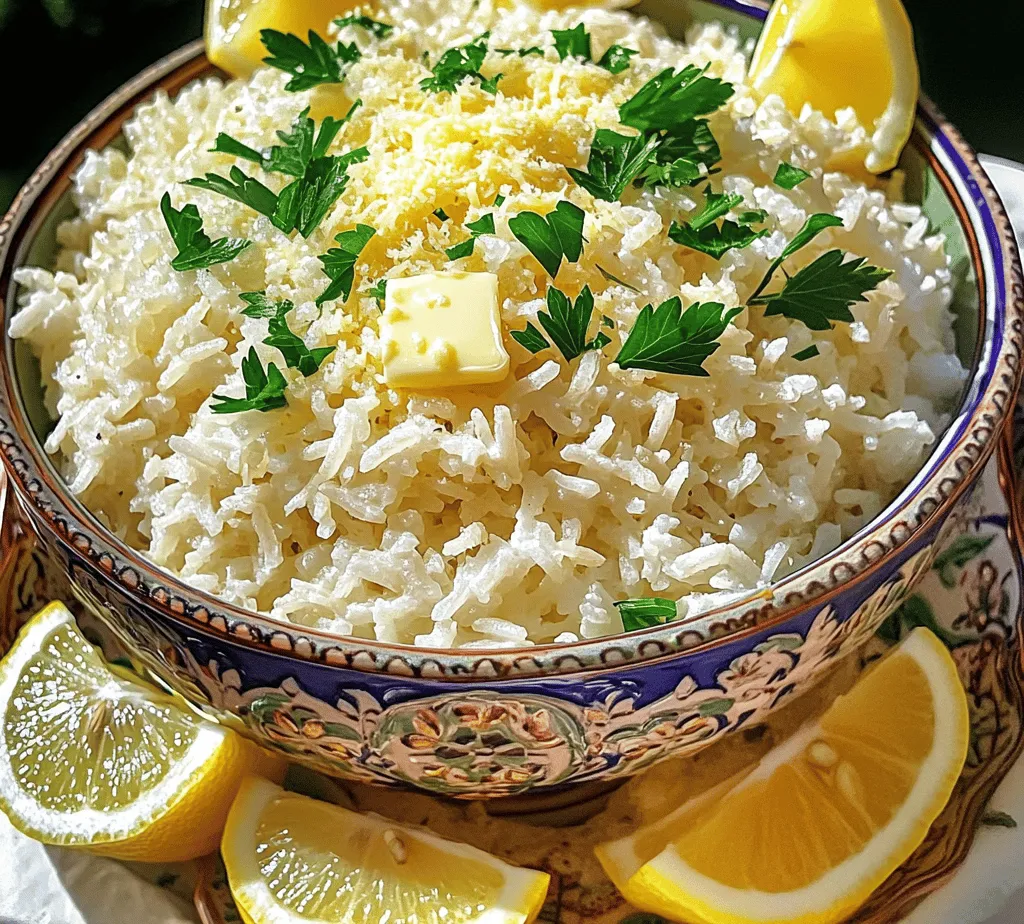
Toasting Rice: Benefits and Techniques for Flavor Development
Toasting the rice is a crucial step in preparing Parmesan Garlic Butter Rice that enhances its flavor profile significantly. This technique involves cooking the rice in a bit of oil or butter before adding liquid, and it can yield several benefits.
Flavor Development: When rice is toasted, the heat helps to release the natural oils within the grains, resulting in a nutty aroma and richer flavor. This step is particularly important in a dish where the rice acts as a canvas for the buttery, garlicky goodness.
Techniques: To toast the rice, simply heat a tablespoon of butter or olive oil in a saucepan over medium heat. Add the uncooked rice and stir frequently for about 3-5 minutes or until the rice is lightly golden and fragrant. Be cautious not to let it burn; the goal is a golden hue rather than a dark brown color.
Cooking the Rice: The Science Behind Simmering and Absorption
Once the rice is toasted, it’s time to cook it. The cooking process is a delicate balance of heat and moisture, and understanding the science behind it can help ensure perfectly cooked rice every time.
Simmering: After toasting, add the appropriate amount of broth or water to the saucepan. The ratio varies by rice type but typically follows the 1:2 ratio (one part rice to two parts liquid). Bring the mixture to a boil, then reduce the heat and cover the pan. This is essential because boiling allows the rice to absorb moisture quickly, while simmering ensures it cooks evenly without becoming mushy.
Absorption: The key to fluffy rice is absorption. Once the rice has simmered for the required time (usually around 15-20 minutes depending on the type), it will have absorbed most of the liquid. It’s important not to lift the lid during cooking, as this releases steam and can disrupt the cooking process. The rice will continue to steam in its own heat even after the heat is turned off.
Resting the Rice: Why It’s Essential for Fluffiness
Resting the rice post-cooking is an often-overlooked step that can elevate your dish. After you remove the rice from the heat, let it sit covered for an additional 5-10 minutes. This resting period allows the remaining steam to finish cooking the grains and helps any excess moisture redistribute throughout the rice.
This step is essential for achieving that desirable fluffy texture. If you skip this step and serve the rice immediately, you may end up with clumpy or wet grains that don’t have the right texture.
Final Mixing: Incorporating Cheese, Parsley, and Optional Lemon Zest
With your rice perfectly cooked and rested, it’s time for the final mixing, where the magic truly happens.
Incorporating Ingredients: Start by adding the grated Parmesan cheese and fresh parsley to the rice. Gently fold the ingredients into the rice using a fork or spatula to avoid breaking the grains. The heat from the rice will melt the cheese, creating a creamy, rich texture throughout the dish.
Optional Lemon Zest: For an added dimension of flavor, consider incorporating lemon zest into the mix. The citrusy brightness can cut through the richness of the butter and cheese, providing a delightful balance. Just a teaspoon or two should suffice—be careful not to overpower the other flavors.
Serving Suggestions
Presentation plays a vital role in enjoying any dish, and Parmesan Garlic Butter Rice is no exception. Here are some ideas for serving this delectable side:
Decorative Bowls: Choose decorative bowls or plates that highlight the rice’s creamy texture and vibrant colors. A simple white bowl can serve as a canvas, allowing the yellow hues of the butter and the green of the parsley to pop.
Garnishing: For an extra touch, garnish your rice with additional grated Parmesan and a sprinkle of fresh parsley just before serving. This not only enhances the visual appeal but also adds a bit of freshness with each bite.
Pairing Suggestions: This rice dish pairs wonderfully with a variety of main courses. Consider serving it alongside grilled chicken, which complements the buttery flavors, or roasted vegetables, which add a healthy crunch. For a heartier meal, it can also accompany steak or pork chops.
Creating a Balanced Meal: To create a balanced meal, think about incorporating a protein, a vegetable, and this flavorful rice. For example, grilled salmon, steamed broccoli, and Parmesan Garlic Butter Rice create a nutritious and satisfying plate.
Nutritional Information
Understanding the nutritional value of your meals can enhance your dining experience. Here’s a breakdown of the key components of Parmesan Garlic Butter Rice:
Calories and Nutrients: A typical serving (about one cup) of Parmesan Garlic Butter Rice contains approximately 300 calories, depending on the specific ingredients used. This includes a good mix of carbohydrates from the rice, protein from the cheese, and fats from the butter.
Health Aspects: The rice provides essential carbohydrates that serve as energy for the body. Including whole grains in your diet is beneficial as they are rich in fiber, vitamins, and minerals. If using brown rice, you enhance the nutritional profile even further with additional fiber and nutrients.
Moderation with Cheese and Butter: While cheese and butter contribute to the rich flavor of this dish, moderation is key. Parmesan cheese provides protein and calcium, while butter adds flavor and richness. Using a moderate amount ensures that you enjoy these benefits without excessive calories or saturated fats.
Conclusion
Parmesan Garlic Butter Rice is a delightful dish that marries simplicity with sophistication. The combination of toasted rice, savory garlic, and rich Parmesan creates a flavor that is both comforting and elegant.
This recipe not only showcases the ease of preparation but also invites experimentation. Feel free to adjust the ingredients to suit your taste—try adding different herbs or spices, or even mix in some cooked vegetables for added nutrition.
As a versatile side or a satisfying main dish, Parmesan Garlic Butter Rice can complement a variety of meals. Whether you’re enjoying it on a weeknight or presenting it at a gathering, this dish is sure to impress. So grab your ingredients and get cooking—your taste buds will thank you!
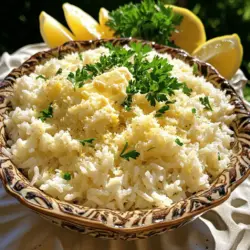

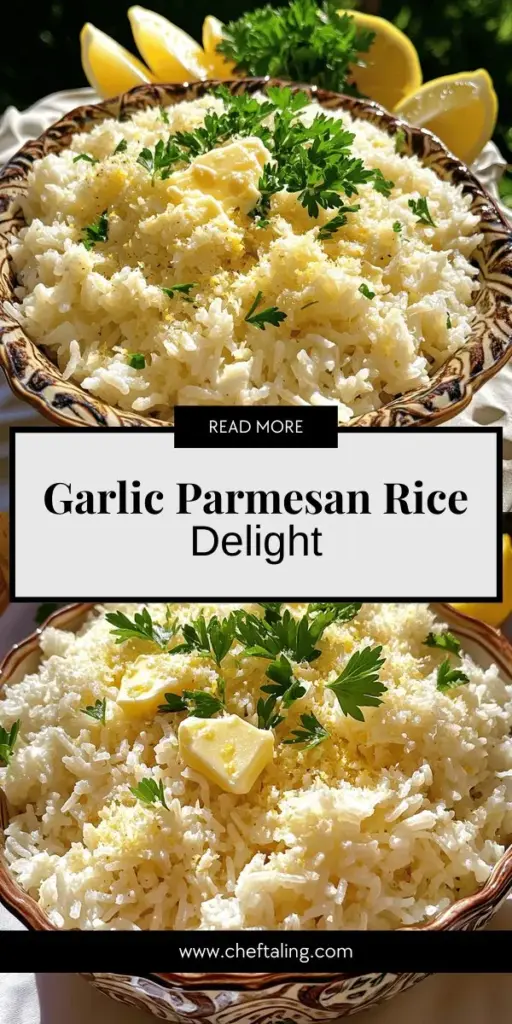

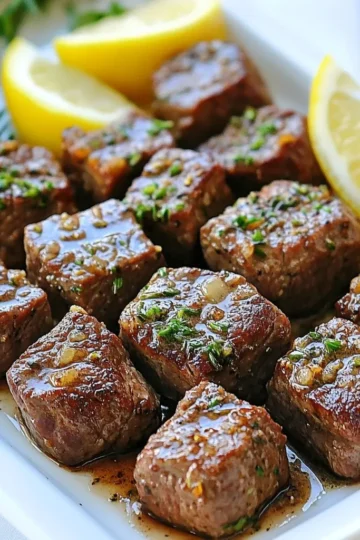
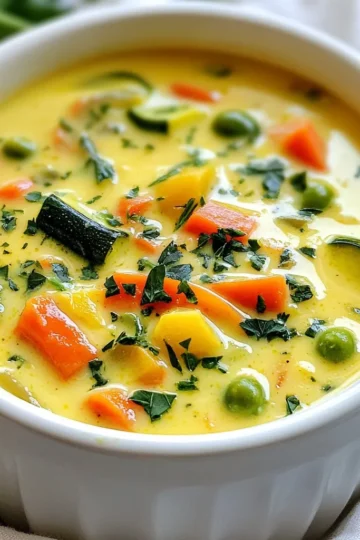
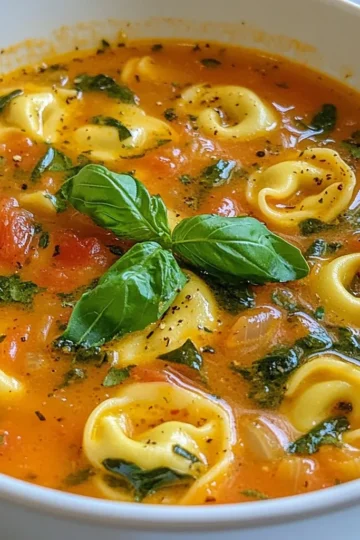
Leave a Reply